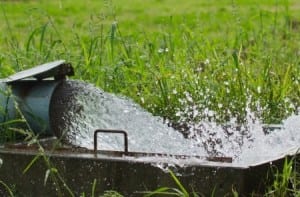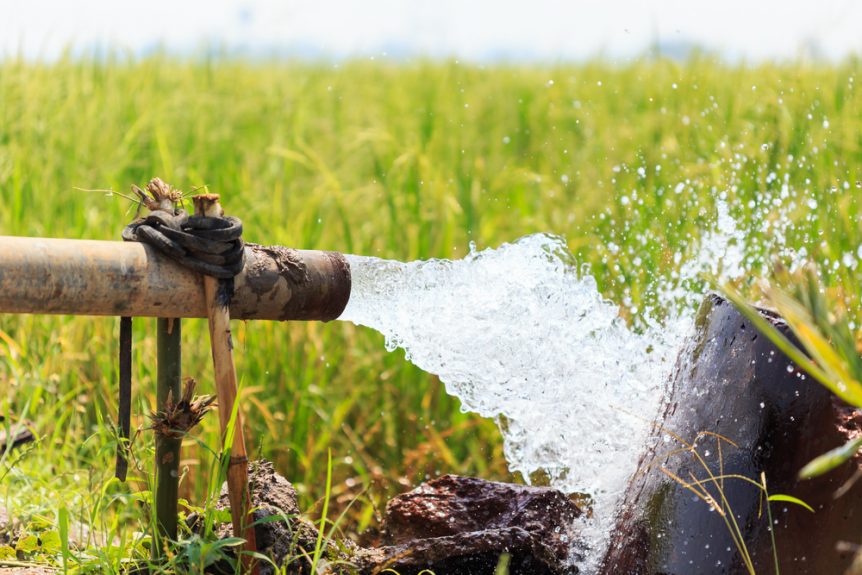
Now that agencies, farmers and others in affected California groundwater basins have formed local groundwater agencies, the costly and more challenging work begins, as the agencies develop groundwater management plans.
Under the 2014 Sustainable Groundwater Management Act, local groundwater agencies—known as GSAs—had to be formed by June 30 for basins or sub-basins classified by the state as medium or high priority because of the importance of groundwater in those basins.
“Up to this point, everything has been focused on local governance,” said Jack Rice, an associate counsel for the California Farm Bureau Federation. “Now, the GSAs will be doing the water management piece. This is where the local water budget comes in. You have to figure out how much water your groundwater basin has, how much groundwater is part of your sustainable yield and what you are going to do to get there.”
As required under SGMA, the GSAs must develop local groundwater sustainability plans to guide groundwater management in the medium- or high-priority areas. Plans now being developed for the 21 basins identified as “critically overdrafted” must be in place by 2020; all others must be in effect by 2022.
The law requires groundwater sustainability plans to include measurable objectives, as well as interim milestones in increments of five years, to achieve the basin’s sustainability goal within 20 years of plan implementation. GSAs must also describe how the plan helps meet objectives for achieving the sustainability goal for the basin for long-term beneficial uses of groundwater. Plans must address six signs of groundwater overdraft.
Failure to meet the long-term sustainability goal under SGMA could result in probationary status and potential intervention by the State Water Resources Control Board.
Tulare County Farm Bureau Executive Director Tricia Stever Blattler said developing a water budget involves hydrogeological experts and engineers “creating some type of ‘bank account’ report that basically shows water coming into the basin and water leaving the basin. Once they determine the net amount of water in and out, they will determine the sustainable yield for all of the users in the basin.”
For the next year and a half, Blattler said, much focus will be on compiling and integrating different sources of groundwater data for affected basins. Ten GSAs have been formed within the boundaries of Tulare County, and the county government will act as a GSA for any unmanaged areas.
“There are three sub-basins in the county, so each sub-basin has to come up with a coordination plan on how they are going to collect and interpret data, and how it will be combined into a broader, basin-wide planning instrument,” Blattler said. “That will form the basis for them to write the groundwater sustainability plans.”
Noting that the plans need to have data everyone in the GSAs can generally agree upon, she said, “in three sub-basins with 10 GSAs, you could potentially have 10 different hydrogeological firms each coming up with their own set of groundwater data points.”
For the Tulare hydrologic region, Blattler said, groundwater sustainability will require additional storage and replenishment of aquifers.
“Surface water is critical for us achieving some level of a sustainable yield in each basin. If we don’t built Temperance Flat and some other storage projects that can help us create more water, it would be very difficult for us to attain that 20-year sustainability plan,” she said.
In San Joaquin County, there are two basins, including the East San Joaquin basin, a high-priority, critically overdrafted sub-basin. Seventeen GSAs representing that sub-basin have formed a joint powers authority, the Eastern San Joaquin Groundwater Authority. As in other agencies representing medium- and high-priority basins, the authority is working on a groundwater model to guide its plan.
“We’ve received grant funds to work on a new model that is shareable that we can work with all of the GSAs and start with the same baseline of information,” said San Joaquin Farm Bureau Federation program director Julianne Phillips. “It’s just a matter of creating a model and then implementing our strategies from there, to better manage and bring ourselves into sustainability.”
San Joaquin County formed a Groundwater Basin Authority in 2001 to help fund conjunctive-use groundwater-replenishment projects, Phillips said. Now, she said, “we’re looking at: How do we fit the conjunctive-use projects that we’ve had into SGMA?”
“We certainly have our share of challenges,” she said, “but we are trying to see the silver lining and the opportunities.”
Monterey County Farm Bureau Executive Director Norm Groot said participants in the Salinas Valley Basin Groundwater Sustainability Agency, a joint powers authority, are developing its plan and have scheduled workshops to learn more about the plan’s components. At an upcoming meeting of the Monterey County Board of Supervisors, groundwater model findings will be presented that will guide the process.
“The report will help us develop the groundwater sustainability plan and also look at what future projects will give us the biggest bang for the buck,” Groot said. “A preliminary report in 2014 showed that we were less than 4 percent off of sustainability, based on records that we’ve had in the last several years as well as estimating recharge amounts.”
Even for a groundwater basin that is easily replenished and close to being sustainable, he said, there is great expense to create and implement a GSA and a groundwater sustainability plan. Local funding from agencies and farmers has been dedicated for the first two years of operating the GSA, but a general assessment would need to be determined for future funding.
“This is a very expensive, unfunded mandate that the state has pushed upon us, particularly in a basin where we are not that far off from sustainability and have been working on that for seven decades, building different projects to achieve that,” Groot said. “This just adds another layer of complexity and expense to the process.”
Rice said county Farm Bureaus around California have been participating in formation of local GSAs and “have done a great job making sure that agriculture’s voice is heard” as the groundwater-planning process moves into its next phase.
Christine Souza is an assistant editor of Ag Alert. She may be contacted at csouza@cfbf.com. Permission for use is granted by the California Farm Bureau Federation.










